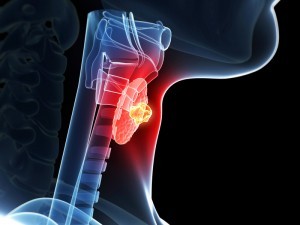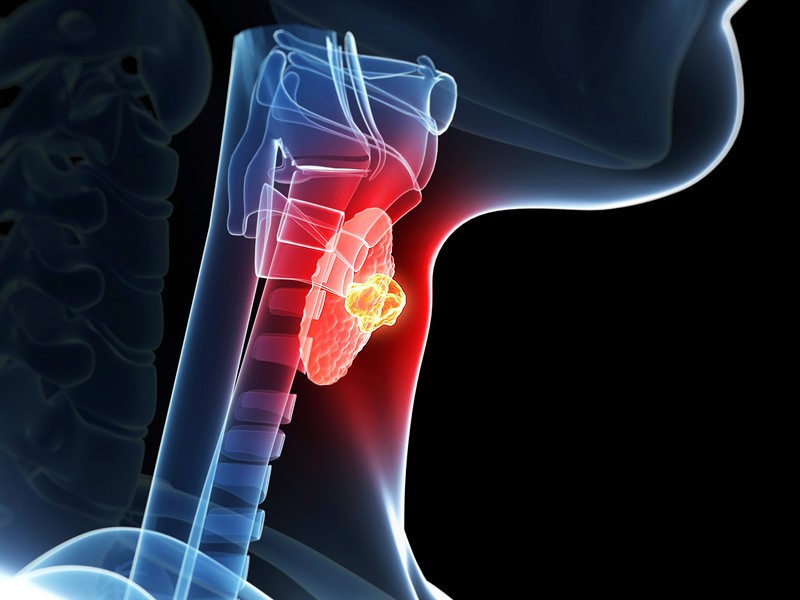
Thyroid cancer is a type of cancer that begins in the cells of the thyroid. The thyroid is the organ in the body that controls metabolism. Chemicals are produced in the thyroid that regulate blood pressure, body temperature, weight, and heart rate. Approximately 200,000 people are newly diagnosed with thyroid cancer worldwide each year. Although thyroid cancer isn’t common in the United States, rates have been increasing. Thyroid cancer can be deadly, but is highly treatable when caught early.
Although the cause of thyroid cancer is not known, anything causing an abnormality in cell DNA puts a patient at risk for development of cancer. Family history of certain types of thyroid cancer can alert doctors to the possibility of a patient developing the disease. Patients that have been exposed to radiation also run a higher risk of being diagnosed with thyroid cancer.
Thyroid cancer appears to be on the rise in many areas of the world, although recent research suggests this may be more due to over-diagnosis than an actual increase in incidence.
In the US, the rate of thyroid cancer has doubled since 1994. In South Korea, it has become the most commonly diagnosed type of cancer, having increased 15-fold in the past 20 years.
However, some cancer experts note that the situation in South Korea is likely due to increased screening and misdiagnosis of harmless tumors. As noted in the featured article:
“South Koreans embraced screening about 15 years ago when the government started a national program for a variety of cancers — breast, cervix, colon, stomach and liver.
Doctors and hospitals often included ultrasound scans for thyroid cancer for an additional fee of $30 to $50... Although more and more small thyroid cancers are being found, however, the death rate has remained rock …
![]() Certain cancer diagnosis methods may be more likely to provide faulty results than others. For example, data indicates that mammography for breast cancer may have up to a 20 percent failure rate. The density of the patient’s breast tissue plays a large role in mammography misdiagnosis, as dense breast tissue may obscure test results and prevent the mammography from identifying abnormal growths. Other types of diagnostic imaging may fail to indicate cancer when the cancerous growth is microscopic or very small.
Certain cancer diagnosis methods may be more likely to provide faulty results than others. For example, data indicates that mammography for breast cancer may have up to a 20 percent failure rate. The density of the patient’s breast tissue plays a large role in mammography misdiagnosis, as dense breast tissue may obscure test results and prevent the mammography from identifying abnormal growths. Other types of diagnostic imaging may fail to indicate cancer when the cancerous growth is microscopic or very small.
Please Read this Article at Articles.Mercola.com





Leave a Reply